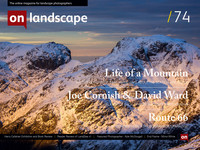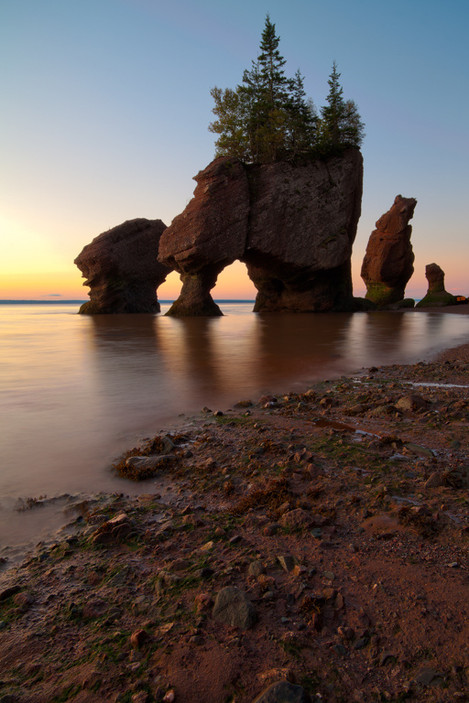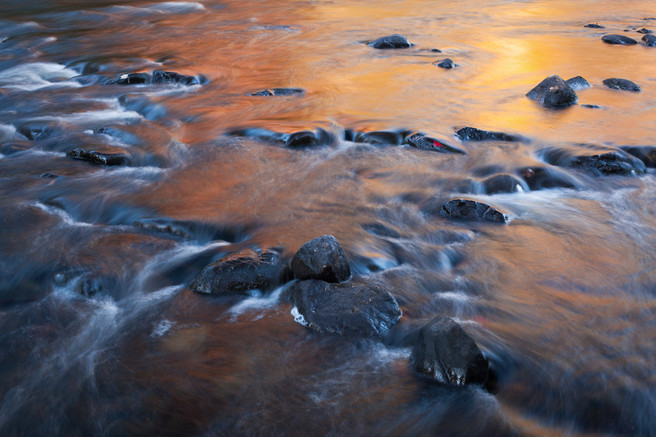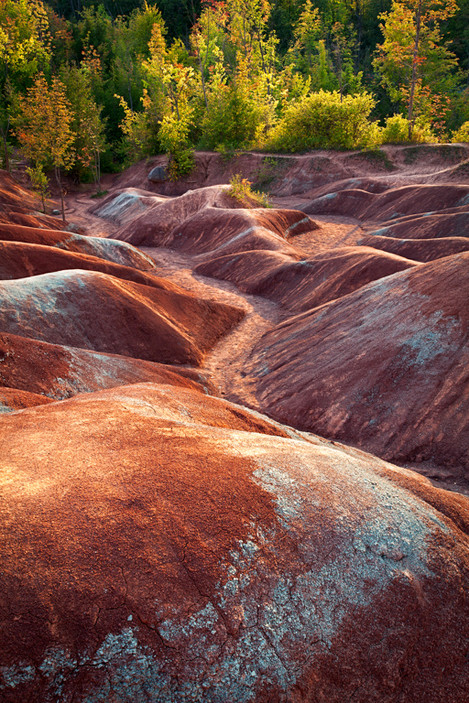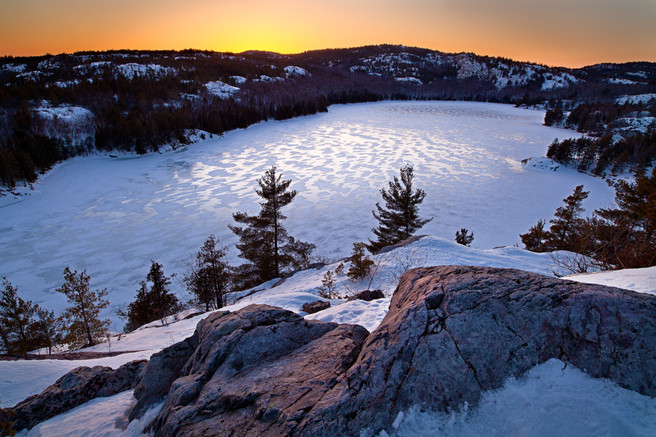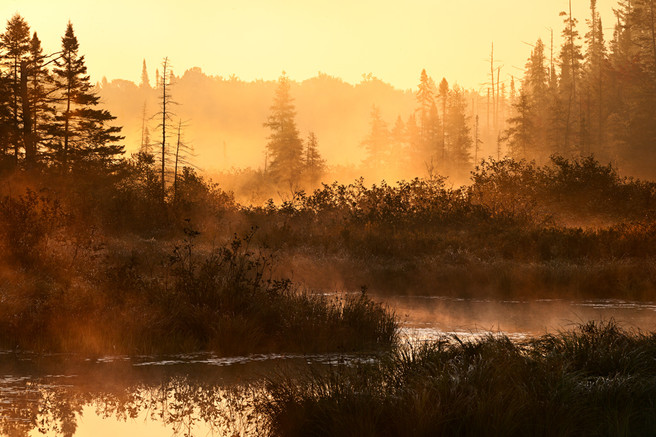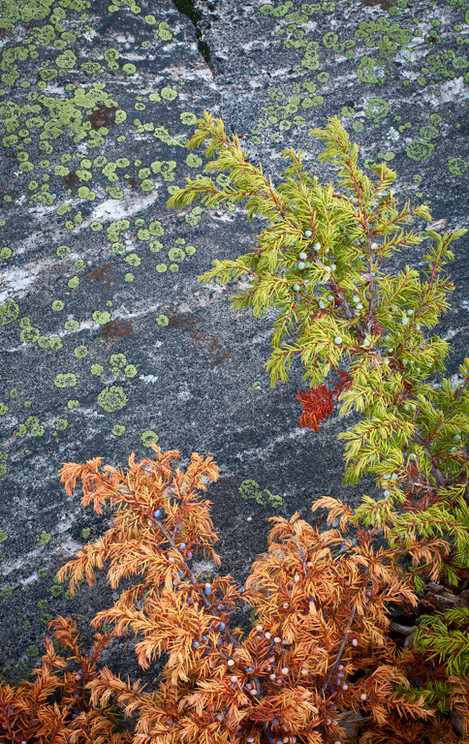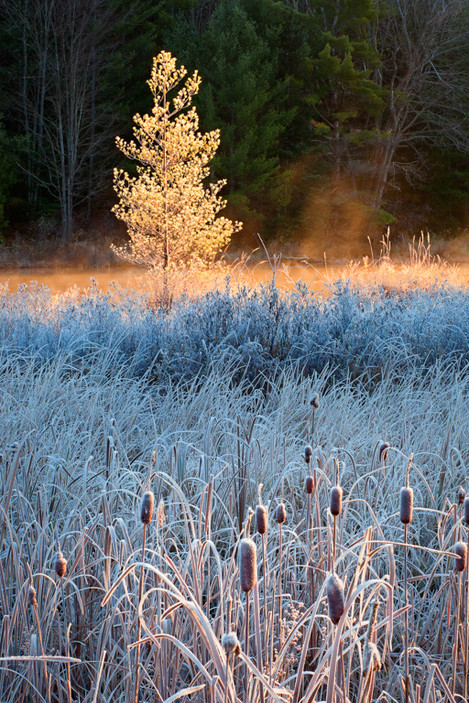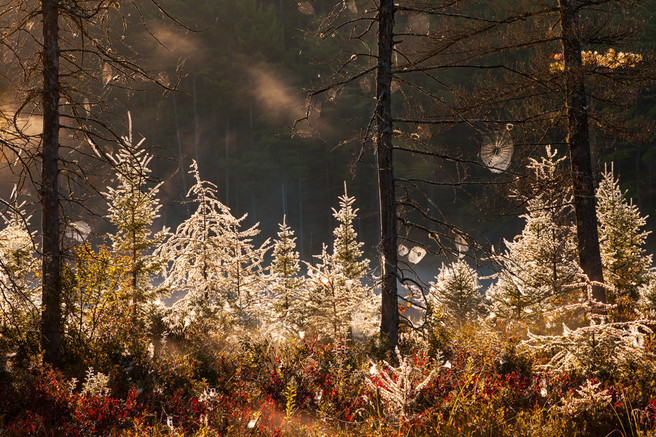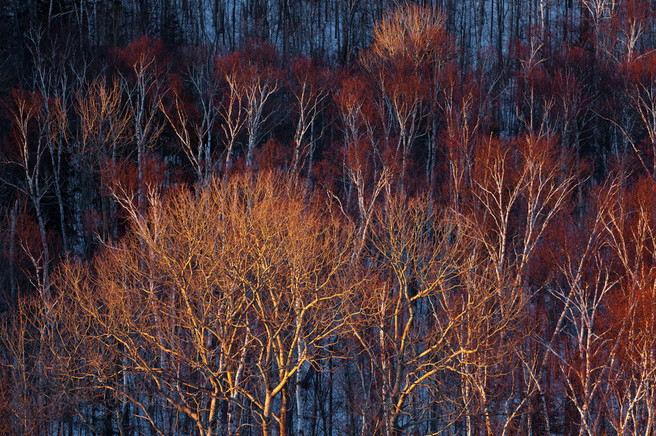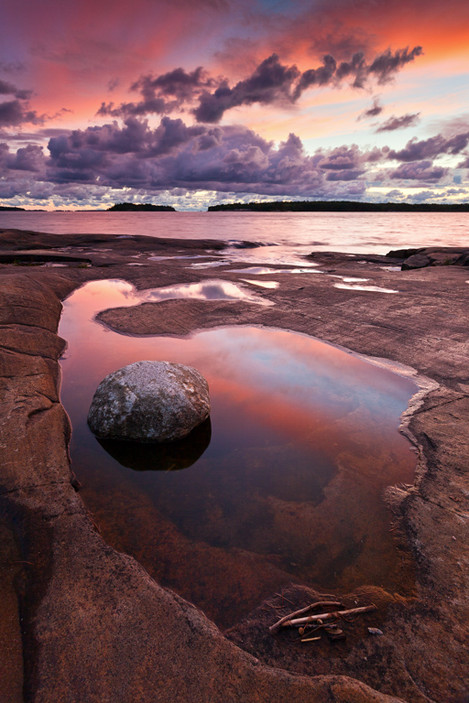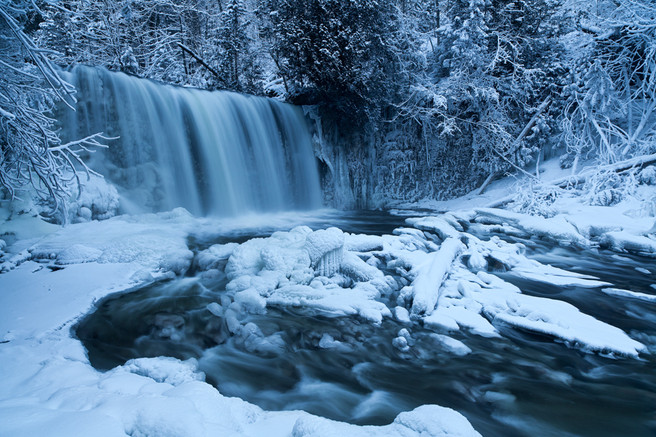Featured Photographer

Kyle McDougall
A Canadian cinematographer working his landscape photography in the beautiful Muskoka area of Ontario.
This issue we're featuring Canadian photographer Kyle McDougall who has some beautiful imagery of Ontario and it's surroundings (and more!).
If you could also tell us where you live and what you do for a living that would be great.
I am a landscape photographer based out of the Muskoka region in Ontario, Canada. For a living I run my own business, which includes work as a cinematographer and editor for television/commercial projects and also landscape photography focused on writing, prints and teaching private workshops (soon to be group workshops).
Can you tell me a little about your education, childhood passions, early exposure to photography and vocation?
I grew up in a larger city in Ontario, Canada, but as a child was exposed to nature on a regular basis with trips to the family cottage further north. I spent my summers exploring the forests around the area as any child would, fishing, swimming, hiking… in search of the next great adventure. I guess I would say that I always had a special connection with nature although it was never exposed, or I never understood it until later in life. After finishing high school I moved out to the Western Canada to spend some time in the Rocky Mountains, which is where I bought my first DSLR. I always had somewhat of an interest in photography, but living in the mountains is where my passion really started to develop. I started creating images whenever I had the chance, and was always excited regardless of the results. It was only natural that with my love for the outdoors, almost all of my photography was focused on my surroundings. I enjoyed the personal approach to creating images and the fact that the results were a reflection of my dedication and commitment. Out of this grew an interest in cinematography, which lead me to move back home and attend school for Film Production. I spent the next two years training in still photography and motion picture film, specifically super 16mm. After graduating I started work as a cinematographer and editor for a couple of television shows, and also found my direction with photography. This is when my images started to focus solely on the land and my passion for nature started to strengthen.
What are you most proud of in your photography?
I would say what I’m most proud of is the journey I’ve created through photography and my growth as an artist. Any creative person knows that no matter how passionate you are about your craft, there are always low points, and what matters most is staying passionate, persistent and curious. It’s the journey that has the biggest impact on your images, therefore it’s extremely important to stay true to yourself and not try to follow someone else’s path. Because of this, photography has evolved into something so much bigger then I ever thought it would be. It has taught me an immense amount about both the land and myself and has grown my appreciation for the simple things in life immensely. I know I still have a huge road ahead, but am excited for the challenges and excitement that the future holds.
In most photographers lives there are 'epiphanic’ moments where things become clear, or new directions are formed. What were your two main moments and how did they change your photography?
I think the biggest moment was when I realised the importance of creating images for myself, not simply trying to please others. I think in the beginning, we all reach a point where we become proficient enough to create images that are technically sound, and we are left searching for other ways to improve our photography. For me, this is where I started to realise the importance of personal vision. The closer I looked the more I started to see and as a result my images started to possess more personality as my appreciation for the land grew stronger. It was this realisation that an image doesn’t have to have bold colours or a dramatic sky to be “successful” that had a profound affect on how I work. I think it’s only natural that starting out we all try to create images to please others in hopes of gaining acceptance. Unfortunately the only thing this does is leaves us creating work that lacks uniqueness and self-reflection. When we strip ourselves of pre-conceived outlines and rules, our images grow stronger. The other moment would be the realisation of how important the experience is. I think we all get to a point where we are so set on creating a great image that we try and force things, forgetting why we are out in nature in the first place. Because of this, the experience becomes un-enjoyable and any images we do create are certain to be affected by it. Now, if I’m at an area and something isn’t working, I simply take a break, and enjoy my surroundings. I will find an image when the time is right, and usually that’s only when I have a clear mind. Both of these things have taught me to take a slower, more detailed approach to creating images, and in the end have shaped the direction I’ve gone with my photography.
Tell me about why you love landscape photography? A little background on what your first passions were, what you studied and what job you ended up doing.
I love landscape photography because it has influenced me to explore places that I may not have otherwise ventured. It has been a big reason why my passion for the outdoors is as strong as it today. It has pushed me out of my comfort zone on many occasions and has taught me many lessons. There is nothing more exciting then going out with my camera to explore for the day, either at a new dramatic location, or somewhere close to home that I’ve visited many times before. It’s the curiosity of what I’ll find that drives me. Like I said before, my passion for nature was always there, but I believe photography was the tool that exploited it and grew it into what it is today. I’m fortunate to do what I love for a living, that being photography and cinematography. Most of my cinematography is lifestyle/action sports based for television and has me working outside and traveling throughout North America. While not directly related to landscape photography, I’m constantly learning as I’m behind the lens, composing and using light in similar ways. I feel that it’s played a large role in developing my vision.
Could you tell us a little about the cameras and lenses you typically take on a trip and how they affect your photography.
The kit I use is pretty simple and consists of a Canon 5D MKII, Zeiss Distagon T* 21mm f/2.8 , Zeiss Planar T* 50mm f/1.4 and Canon 70-200mm f/4 L. I switched to the Zeiss primes after not being completely satisfied with Canon’s wide-angle zoom lenses. The Zeiss 21mm seems to be the lens that is on my camera the most, although I never approach an image from a focal length standpoint, I always visualize first and then select a lens based on what I want to show. I like the Zeiss ZE series lenses because I know I can rely on them to resolve the most detail and produce the cleanest results. The 21mm in particular is the most impressive wide lens I’ve used and captures stunning detail from edge to edge. I’ve enjoyed working with prime lenses as they match my slower approach. They also work great for shooting video with their smooth focus throw. In the future I’d like to keep building my collection of primes starting with the Zeiss 35mm f/2 ZE. When Canon eventually releases a body with more resolution I’ll likely make the upgrade, but for now the MKII serves me well.
What sort of post processing do you undertake on your pictures? Give me an idea of your workflow.
Like everyone else in the digital age, processing plays a large role in my work, but in varying amounts depending on the image. I strictly use Photoshop for all of my images. My process starts off in Camera Raw where I optimise my “digital negative”, sticking to minor exposure adjustments like black levels, shadows and minor highlight recovery. From there I will apply capture sharpening and remove any lens aberrations if need be. After this, all of my adjustments are done in Photoshop through a series of layers and layer masks. Again, the amount is very much dependant on the image and can be very simple or very complicated. Post processing for me is a way to overcome limitations of the camera and also shape my personal vision. I often use manual blending for exposure issues or focus stacking to avoid lens diffraction. Luminosity masks also play a large role in my processing workflow as a way to target specific tones throughout my image. Every time I process an image I refine my techniques in small increments, even if I notice it or not. All of my images are saved as TIFF master files and then duplicated for printing, web etc. I often find myself revisiting old images as my skill and techniques become more refined.
Do you get many of your pictures printed and, if at all, where/how do you get them printed?
I print all of my images myself up to 17” wide on an Epson 3880. For images any larger I outsource to a local landscape photographer who I have a good relationship with. The printing process is something that holds a lot of value. In my opinion, the image truly becomes complete once it’s printed. I use a range of papers depending on the image but recently have been using Red River’s San Gabriel Semi Gloss Fibre. I also use Ilford Prestige Smooth Pearl. Matte papers are something that I haven’t yet experimented much with but may in the future depending on the image. It’s an exciting process as I always find myself making small refinements every time I print an image.
Tell me about the photographers that inspire you most. What books stimulated your interest in photography and who drove you forward, directly or indirectly, as you developed?
In our day and age with the Internet we have access to so much inspiring work, it’s almost overwhelming. There are so many talented photographers out there, some with whom I’ve had the privilege of getting to know. Someone who has had a big influence on my work has been Guy Tal. Not only for his images, but also his writings. I admire his passion, mindset and approach towards creating. There have been a number of books that have had large influences on how I work. David Noton’s “Waiting For The Light” was one of the first books I owned that really introduced me to the intricate process of creating an image. I’ve also enjoyed Alain Briot’s collection of books published under Rocky Nook. And of course Galen Rowell’s classic Mountain Light. It’s books like these where photographers really express themselves and their approach that have had the biggest influence on my photography.
What is the landscape photography community/scene like in Canada compared with your perceptions of the US or Europe?
This is a tough one but I would say that the landscape community in Canada seems a lot smaller and because of this possibly tighter knit. Obviously, with Canada’s population being lower than both the US and UK there are less of us landscape photographers around and therefore it becomes easier to get to know everyone who is involved in the scene. I could be wrong on this, but that’s what I would assume. Lately, I’ve noticed more people start to take an interest in landscape photography, which is exciting. You don’t have to go far in Canada to be surrounded by nature, which is a big benefit for us. The amount of inspiration around is endless! That all being said, social media has really changed the way we interact and has opened up the door for us to meet other photographers from all over the world.
Tell me what your favourite two or three photographs are and a little bit about them.
What I consider my favourites are constantly changing the more I create. At the moment, if I had to pick three, these would be them. They are all similar in subject matter, which I think shows the direction my photography is headed.
“The Stand Off” : This was one of the first images I created from a “visualisation” stand point a number of years ago and it really changed the way that I approach my work. I had passed by this area many times and eventually decided to stop and scout out possible images. I was attracted to the lone tree on the riverbank and knew that with where it was located there was the potential to work with dramatic light to create a strong mood. I returned one morning at the start of winter with frost covering the land and mist slowly rising from the water. I waited for the right moment when the tree was backlit and a select portion of the warm morning light had spilled on the foreground. It’s this layering of light and shadows that I feel give images a strong sense of depth.
“The Tree Of Life” : I created this image last autumn at a location close to my home. By far, my favourite time of year to shoot is in autumn when the mix of varying temperatures creates thick fog and mist that blankets the landscape. I’m always attracted to busy scenes and the way that mist can simplify them. I explored this particular area for over an hour searching for the right image. I’ve found that a lot of my images focus on trees. I think they have a lot of qualities that attract me, one of them being lines. I really liked the way that the foreground trees act as a frame and seem to “guard” the centre tree. The bird’s nest in the centre tree was what ultimately completed the image for me.
“Winter Warmth” : I spent three days camping at this location, exploring and photographing throughout the days. This particular evening I climbed to the top of a ridge to capture the fleeting light and a vista of the surrounding lake. The first image I created was a wider view, which shows off the surrounding land, but in the end it was this more intimate composition that resonated with me the strongest. I’m always attracted to mixing warm and cool light and the effect it can have on the final image.
If you were told you couldn’t do anything photography related for a week, what would you end up doing (i.e. Do you have a hobby other than photography..)
I would most likely go camping, canoeing or hiking, just without my camera. Or work on one of my personal projects related to Filmmaking (Does that still count?). I’m passionate about telling stories and have a short documentary project in the works focusing on another artist. I think that everyone has a story to tell or at the very least a meaningful message. I really enjoy exploring the possibilities of impacting others through filmmaking. Cinematography really interests me… mainly the power and complexity of it.
What sorts of things do you think might challenge you in the future or do you have any photographs or styles that you want to investigate? Where do you see your photography going in terms of subject and style?
My plan for the future is to follow whichever path my photography takes me. I haven’t ever had a specific style that I’ve tried to follow; rather, I’ve just let my photography take me in specific directions and embraced them. I really see my work exploring the finer details and more intimate scenes in nature. This is something that over the past couple of years I’ve noticed myself trending closer towards. I really enjoy exposing the amazing scenes in nature that many others miss. I think for all of us, as our eyes and minds become more refined, it’s these details that interest us more rather than what’s most obvious.
How do you work with both moving and still image together and is it possible to do both at the same time?
My photography and video work are very separate endeavours. Landscape photography for me is a very slow and personal process. Most of the time when I head out to shoot I only end up creating one image. Also, there’s the fact that the results are based solely on my own input and effort. When I’m shooting video, it’s usually under very different circumstances. All though I approach this type of work from a cinematic standpoint and spend as much time composing and creating shots as I can, I have to work fast as each shot is just one piece of a scene, which in the end is made up of a large number of shots. With moving images you are almost always working with a number of people in the production, and all of these people play a big role in how the final product turns out.
How does telling a story differ when using stills or moving images?
Telling a story is very different between both mediums. Obviously, moving images are used in groups and are usually accompanied by dialogue, sound and music to tell a story. Whereas a still image has to stand on its own and really comes down to how deep a viewer looks into the image and how they interpret it. That being said, it’s still important to create moving images with as much meaning as possible so they match/suit the overall mood and story you are trying to tell. Both have their challenges but in a way I would say it’s almost more difficult to tell a story with a still image as opposed to a moving image. I enjoy the fact that both have their own unique challenges.
Who do you think we should feature as our next photographer?
If I had to suggest someone I’d say my good friend Greg Russell as his images and writing posses a lot of depth and are always a source of inspiration.
Thanks Kyle! You can see more of Kyle's work at his website kylemcdougallphoto.com

